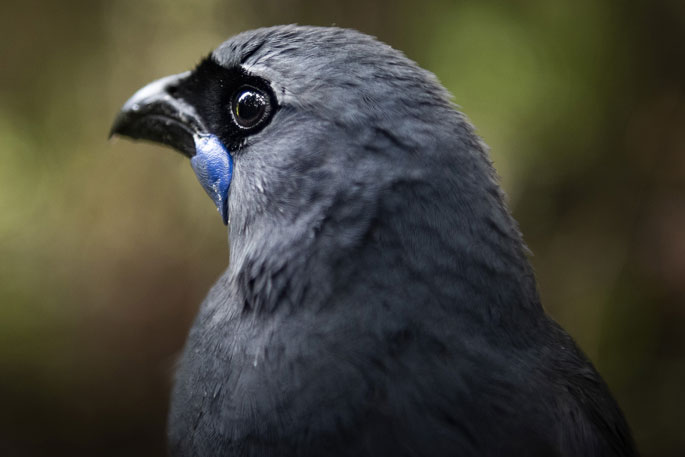A first-of-its-kind conservation project to help one of New Zealand's most ancient birds to thrive in the Bay of Plenty has attracted $351,000 worth of funding from BayTrust.
The Kōkako Ecosystem Expansion Programme seeks to establish ‘habitat corridors' linking the Kaharoa Forest, north of Rotorua, to nearby Ōtanewainuku Forest in the Western Bay of Plenty.
By restoring and re-planting pockets of native bush between these two forests and carrying out pest control, it is hoped the existing populations of kōkako will be able to expand.
The kōkako is considered to be an indicator species so if it is flourishing, the ecosystems contained in the new habitat corridors will also be flourishing, delivering multiple biodiversity benefits.
KEEP spokesperson and Port Blakely Regional Forester, Alfred Duval, says there are currently 173 breeding pairs of kōkako at Kaharoa which is nearing the maximum capacity the forest can hold.
'Each breeding pair is territorial and take up about 8ha of space. However, a genetically sustainable kōkako population requires at least 250 breeding pairs spread over 2000ha of bush. To ensure the kōkako population keep growing and thriving, they need more habitat and that's what KEEP is seeking to achieve.”
The KEEP coalition currently comprises 16 different entities including Tapuika iwi, foresters, farmers, private landowners, local government and volunteer conservation groups like the Kaharoa Kōkako Trust who have spearheaded local conservation efforts for the past 25 years.
Thanks to the BayTrust funding, a part-time Project Manager will now be employed to handle all the administration and communication tasks, as well as helping to identify areas suitable for restoration planting and pest control to help in-fill the 6km-long corridor itself.
 Translocating kōkako from the Kaharoa Forest. Photo: Neil Robert Hutton.
Translocating kōkako from the Kaharoa Forest. Photo: Neil Robert Hutton.
'This money is going to make a significant difference to the long-term survival of this species,” Duval says.
'Up till now KEEP has been really organic in our spread and ability to reach out. This grant is going to really help us get some structure around formally managing what we want to achieve and getting more pest control and new plantings underway.
'It's hard to put it into words how excited we are. No-one has created a habitat corridor specifically for kōkako before. I view this as a really important test case and we're going to learn a huge amount from it. Hopefully it will also benefit other conservation groups in the long-run, and other populations of kōkako around New Zealand.
'For an outfit like BayTrust to view our project as an important avenue for funding is the most incredible vote of confidence for what we're trying to do.”
BayTrust CEO Alastair Rhodes says North Island kōkako are a taonga (treasure) to all New Zealanders and should be protected at all costs.
Its South Island counterpart hasn't been seen for decades and its wattlebird relative, the huia, has been extinct since the early 20th century.
'Successful predator control efforts to protect North Island kōkako in small pockets of native forest like Kaharoa Forest mean the species is now deemed to be ‘at risk – recovering'. One of BayTrust's key funding priorities is kaitiakitanga to protect and improve our natural environment. We're very pleased to offer this financial support to KEEP to ensure these beautiful birds continue to fill our forests with their haunting birdsong for future generations and so newly established corridors will benefit multiple species and ecosystems.”



0 comments
Leave a Comment
You must be logged in to make a comment.